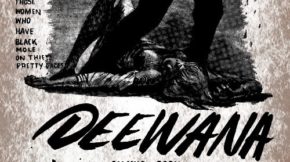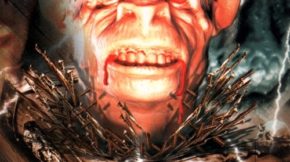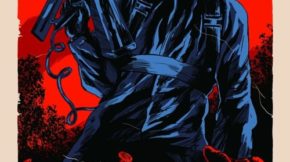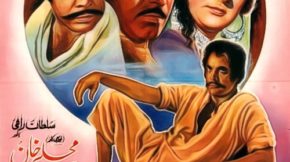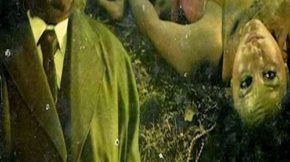Haatim Tai arrived just as the grim Southern-based cycle, Kader Khan scripted horrors had pretty much run their course, and the public had more than had enough. Jeetendra’s second wind as a Superstar was drawing to an end as Qayamat Se Qayamat Tak had broken the spell of the Jeetendra-Sridevi-Jayaprada-Kader Khan-Bappi Lahiri syndrome that had tortured and delighted audiences for what seemed like an eternity during the mid to late 80s.
Several factors led to the Southern Studios leading the charge as the 80s moved along. In Bombay, the underworld had become a significant force to reckoned with, stars were demanding outrageous salaries, and indiscipline was rife. Frequent strikes crippled production in Bombay while the Madras based studios opened their doors to any of those who agreed to star in their stylized escapist fantasies and family melodramas. Kader Khan was the expert in churning out one script after another, and this was an era with his stamp imprinted all over. Haatim Tai was late arriving; by 1990, things had changed, and Padmalaya’s stock didn’t afford them the luxury of comfortable budgets. The cast of Haatim Tai is nowhere near as impressive as the casts commanded by Padmalaya during the ecstatic phase of Tohfa, Himmatwala, Patal Bhairavi, Singhasan and co. Still, Jeetendra stood firm despite looking a little tired and the multiplying wrinkles plastered over with judicious dabs of make-up.
The theme and template are based on the typical Arabian Tales TV serial style fantasy; indeed, there are two previous versions of Haatim Tai from years gone by, the last in 1967. The look is distinctly cut-price High School Drama Club aesthetics featuring an Arabian desert that looks startlingly like the outskirts of Madras. Also on view are an array of kitchen sink cave dwellings, huts and majestic palaces from the Arabian glory days, all etched seemingly of cardboard and Styrofoam and a ton of glue.
Haatim Tai’s budget constraints meant that the wonders of the Padmalaya Studio needed restraining. Even the clunky monsters such as the Man-eating Tree Spirit Creatures have cut-price joke shop rubber masks on. The kind you would expect in a Harinam Singh classic, not a major studio film starring Jeetendra and the Vicco Vajrandanti Girl; Sangeeta Bijlani.
However, despite the deliciously tacky production values, the film moves on at a fair jaunt, not allowing the viewer to dwell on the uninspired backdrop too long.
The film focuses on a wonderfully benign leader named Haatim (Jeetendra), trying to make everybody’s wishes come true. One day as he is handing out sympathy and gold coins in equal measure to all comers, he is met by a woman he recognizes as a Princess of nearby land. She cries on his shoulder, telling him she is torn from the love of her life and that her life is misery. Immediately the wonderful Haatim swears to fix things for her even if it means risking his own life to do so.
It is discovered that the Princess has been disallowed from getting married because of a dreadful curse put on her father (Raza Murad) by an irate fairy (Gulnar Pari, played by Sangeeta Bijlani). Gulnar happened to be entranced by dad’s chandeliers one night and was flying around his room when lustful thoughts entered his mind and possessed him to the point that he lunged for her with dubious intent. In return, she curses him and his daughter with dire consequences and turns into stone herself, rather like Medusa without the serpents, frozen in time, waiting for a messiah to put things right.
The film plays a tad like The Wizard of Oz as Jeetendra has to make his way on his selfless quest to solve an unfortunate princesses love life problems. A man of his word, Haatim, soldiers on and starts to one by one unravel the seven riddles he must answer to lift the curse. Each time he answers a puzzle, he learns a valuable lesson about life and beyond from the master above, Allah. Also, each time he solves a riddle, Gulnar is partially released from her Stone-like structure into real flesh and blood. Haatim and his sidekick are confronted with some scary and hair raising situations, and his faith, bravery and brilliance are all put through the severest possible test.
Initially, he has to survive a seduction attempt by Huma Khan and conquer his immoral thoughts and lust. Fortunately for him, he happens to be wearing an amulet that awakens the upright Muslim in him; just in the nick of time, all is saved. Because of his heroic deed, he is rewarded with the answer to the first riddle. Later he and his sidekick are assailed by tree monsters wearing cut-price Halloween masks, and once again, Lady Luck smiles on them as a good fairy flying above notices the trouble they are in and dazzles the nasty tree monsters with her wand. Next, they help an old man who used to be a notorious dacoit who used to take the time to feed the little fishes in the sea. One day the Angels of death arrive at his bedside to take him to his judgment, and he is confronted by a furious judge who sentences him to eternal hellfire. Still, an intervention by another kindly fairy redeems him. It was his feeding the little fishes that saved his skin, and he is allowed to carry on with his life which he subsequently devotes to Allah as all good men must.
In the phenomenal climax of this stupendous movie, Haatim must do battle with two ghastly Bear like creatures and recover a giant egg. Later he has to confront the She-Wolf Princess, who has been turned into a hairy beast by an old devotee’s curse. It’s all pretty hair raising stuff and ends up like a fangled mixture of Se7en and The Wizard of Oz Arabian Knights style. There are other complications along the way as Pari Bano’s dad catches his daughter cavorting around with a handsome lover and is enraged at her immoral behaviour, instantly turning her into a dwarf and capturing her in a cage. Even he is soon won over as our ever heroic Haatim performs more astounding miracles with the power of his faith.
Jeetendra is stoic, dashing and heroic and dressed in the nattiest outfits since the New Romantic era of the early 80s. Sangeeta Bijlani demonstrates her prowess with the Vicco Vajradanti Toothpowder Toothpaste smile as Pari Bano and Pari Gulnar, sparkling as her feathery wings flutters about the movie, not unlike Glinda did in Oz. Amrish Puri is loud and suitably comical, while Vijayendra, as the star crossed lover, performs occasional slow-motion sprints to the arms of his beloved in the backdrop of some rather shoddily painted sand-dunes and the occasional camel.
The film rattles along at a reasonable speed, though. Even the dreary set of songs by Laxmikant Pyarelal cannot deter the loopy grandeur of the cardboard and paper sets and the kitchen sink costumes as the rather fantastic and clunky monsters who steal the show entirely. The climactic scene featuring a prolonged bear fight with a toothless hag cheering Haatim on so that she can acquire her giant chicken egg is pure Bollywood 80s joy. Haatim Tai is joyous, bargain-basement fun all the way. Not perhaps suited to the lofty grandeur of some modern-day Bollywood masters and the cineplex audiences but certainly a whole lot more bang for the buck and far more entertaining.






